
Robert Southey was an English poet of the Romantic school, and Poet Laureate from 1813 until his death. Like the other Lake Poets, William Wordsworth and Samuel Taylor Coleridge, Southey began as a radical but became steadily more conservative as he gained respect for Britain and its institutions. Other romantics such as Byron accused him of siding with the establishment for money and status. He is remembered especially for the poem "After Blenheim" and the original version of "Goldilocks and the Three Bears".
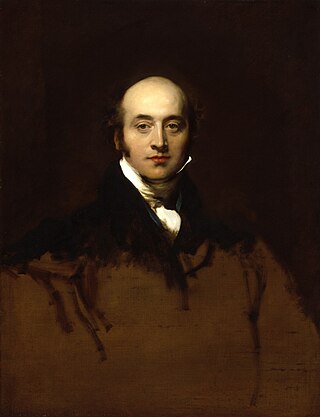
Sir Thomas Lawrence was an English portrait painter and the fourth president of the Royal Academy. A child prodigy, he was born in Bristol and began drawing in Devizes, where his father was an innkeeper at the Bear Hotel in the Market Square. At age ten, having moved to Bath, he was supporting his family with his pastel portraits. At 18, he went to London and soon established his reputation as a portrait painter in oils, receiving his first royal commission, a portrait of Queen Charlotte, in 1789. He stayed at the top of his profession until his death, aged 60, in 1830.
This article contains information about the literary events and publications of 1775.

The Golden Treasury of English Songs and Lyrics is a popular anthology of English poetry, originally selected for publication by Francis Turner Palgrave in 1861. It was considerably revised, with input from Alfred, Lord Tennyson, about three decades later. Palgrave excluded all poems by poets then still alive.

James Harrington was an English political theorist of classical republicanism. He is best known for his controversial publication The Commonwealth of Oceana (1656). This work was an exposition of an ideal constitution, a utopia, designed to facilitate the development of the English republic established after the regicide, the execution of Charles I in 1649.

Walter Savage Landor was an English writer, poet, and activist. His best known works were the prose Imaginary Conversations, and the poem "Rose Aylmer," but the critical acclaim he received from contemporary poets and reviewers was not matched by public popularity. As remarkable as his work was, it was equalled by his rumbustious character and lively temperament. Both his writing and political activism, such as his support for Lajos Kossuth and Giuseppe Garibaldi, were imbued with his passion for liberal and republican causes. He befriended and influenced the next generation of literary reformers such as Charles Dickens and Robert Browning.
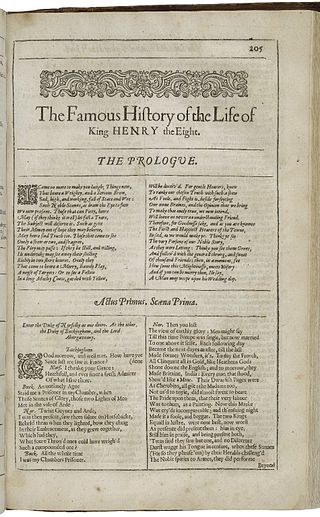
The Famous History of the Life of King Henry the Eighth, often shortened to Henry VIII, is a collaborative history play, written by William Shakespeare and John Fletcher, based on the life of Henry VIII. An alternative title, All Is True, is recorded in contemporary documents, with the title Henry VIII not appearing until the play's publication in the First Folio of 1623. Stylistic evidence indicates that individual scenes were written by either Shakespeare or his collaborator and successor, John Fletcher. It is also somewhat characteristic of the late romances in its structure. It is noted for having more stage directions than any of Shakespeare's other plays.
The Oxford Book of English Verse, 1250–1900 is an anthology of English poetry, edited by Arthur Quiller-Couch, that had a very substantial influence on popular taste and perception of poetry for at least a generation. It was published by Oxford University Press in 1900; in its india-paper form it was carried widely around the British Empire and in war as a 'knapsack book'. It sold close to 500,000 copies in its first edition. In 1939, the editor revised it, deleting several poems that he regretted including and adding instead many poems published before 1901 as well as poems published up to 1918. The second edition is now available online.
The Oxford University Press published a long series of poetry anthologies, dealing in particular with British poetry but not restricted to it, after the success of the Oxford Book of English Verse (1900). The Oxford poetry anthologies are traditionally seen as 'establishment' in attitude, and routinely therefore are subjects of discussion and contention. They have been edited both by well-known poets and by distinguished academics. In the limited perspective of canon-formation, they have mostly been retrospective and well-researched, rather than breaking fresh ground.
These are Oxford poetry anthologies of English poetry, which select from a given period. See also The Oxford Book of Twentieth Century English Verse and Eighteenth century women poets: an Oxford anthology.
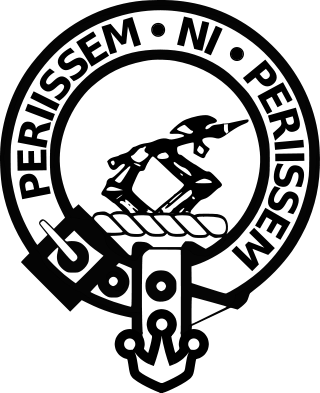
Clan Anstruther is a Scottish clan.

Clan Carnegie is a Lowland Scottish clan.

Clan Ogilvy, also known as Clan Ogilvie, is a Highland Scottish clan. Originating from Angus, Scotland, the progenitor of the Clan received a barony from King William the Lion in 1163. In 1491, King James IV elevated Sir James Ogilvy as Lord Ogilvy of Airlie.
Nationality words link to articles with information on the nation's poetry or literature.
Literary Taste: How to Form it is a long essay by Arnold Bennett, first published in 1909, with a revised edition by his friend Frank Swinnerton appearing in 1937. It includes a long list of recommended books, every item individually costed.
Events from the year 1650 in England, second year of the Third English Civil War.
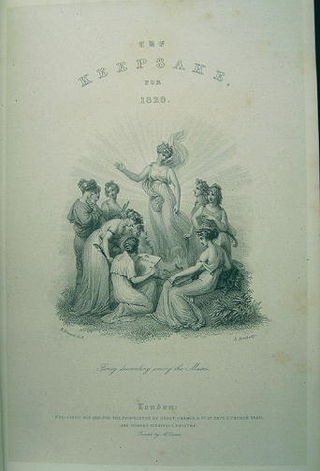
The Keepsake was an English literary annual which ran from 1828 to 1857, published each Christmas from 1827 to 1856, for perusal during the year of the title. Like other literary annuals, The Keepsake was an anthology of short fiction, poetry, essays, and engraved illustrations. It was a gift book designed to appeal to young women, and was distinctive for its binding of scarlet dress silk and the quality of its illustrations. Although the literature in The Keepsake and other annuals is often regarded as second-rate, many of the contributors to The Keepsake are canonical authors of the Romantic period.

Sir John Tregonwell was a Cornish jurist, a principal agent of Henry VIII and Thomas Cromwell in the Dissolution of the Monasteries. He served as Judge of the High Court of Admiralty from 1524 to 1536.
Sir Edmund Verney was an English soldier who fought on the Royalist side during the English Civil War.
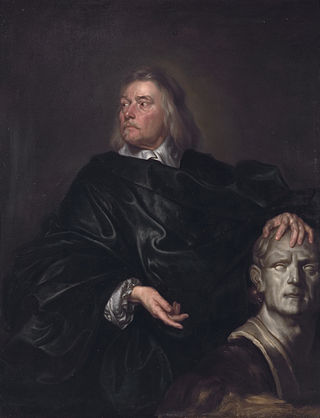
Edward Pierce or Pearce (1630–1695) was a 17th century English sculptor and architectural sculptor. He was also an avid collector of books, drawings and plaster figures.